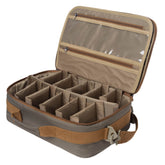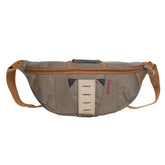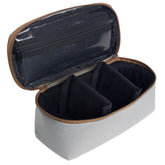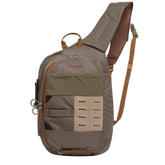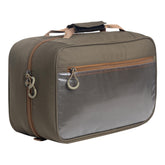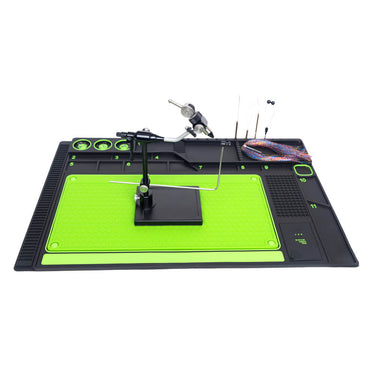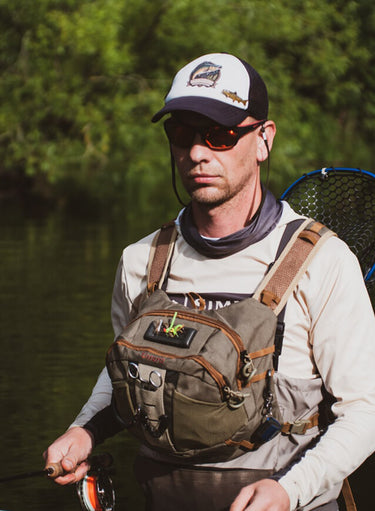Fly Line: Understanding Backing Line for Dry Flies and Knot Strength
In the world of fly fishing, the right line can make a significant difference in your experience and success on the water. I often find that understanding the nuances between fly line and backing line is crucial for any angler looking to improve their skills. Choosing the appropriate fly line not only enhances casting accuracy but also impacts the overall performance of your fly rod and reel setup.

When targeting specific species or using particular techniques, such as dry fly fishing, knowing the characteristics of backing line becomes important. The backing line provides additional length and strength when playing larger fish, which can be essential for those exciting moments when your reel runs out of line. It's vital to recognize how backing line differs from fly line, as each serves its specific role in achieving a successful catch.
Knot strength is another element to consider in this equation. Ensuring your backing line is securely attached to your fly line is critical for avoiding sudden break-offs during a fight. Understanding these aspects will help you make more informed decisions about your equipment and ultimately enhance your fly fishing adventures.
Fundamentals of Fly Fishing Lines
Understanding fly fishing lines is crucial to improving my fishing technique and ensuring a successful outing. Different lines serve specific purposes and suit various species, which impacts my overall fishing experience.
Types and Purposes of Fly Lines
I find that there are several types of fly lines, each designed for specific fishing techniques and conditions. The main types include:
- Floating Lines: Ideal for dry flies, these lines remain on the surface and help present the fly naturally to species like trout.
- Sinking Lines: These lines sink below the surface, making them suitable for fishing at greater depths for species such as bass and tarpon.
- Intermediate Lines: These are neutral in buoyancy and hover just below the water's surface, allowing for versatile presentations.
Each line type is also assigned a weight and taper, influencing casting styles and accuracy. The right choice can significantly enhance my ability to catch fish effectively.
Selecting the Right Fly Line for Different Species
When targeting various species, I must consider the line's compatibility with the fish's behavior. For trout, I prefer a floating line, especially during hatch periods when surface feeding is prevalent.
For bass fishing, I tend to use a sinking line that allows me to reach deeper waters where they often hide.
If I’m after tarpon, choosing a line with adequate weight to handle the powerful runs of this game fish is essential.
To summarize, understanding line weights and taper styles plays a pivotal role in my selection process. Investing in the right fly line tailored to the specific species can elevate my fishing experience significantly.
Backlines for Fly Fishing
Fly fishing backing line plays a crucial role in my setup, providing additional length and strength behind the main fly line. In this section, I will explore the components of backing lines, their differences from fly lines, and what to consider regarding knot strength.
Understanding Fly Fishing Backing Line
Backing line serves as a necessary extension of my fly line, typically made from materials like Dacron or braid. These materials offer durability, low stretch, and resistance to abrasion, making them suitable for the demands of fly fishing.
Backing is usually attached to the reel's spool, allowing for extra line storage, especially when targeting larger fish. For instance, I often use a 300-yard spool of backing to ensure ample line is available during intense battles with spirited trout or bass.
Comparing Backing Lines and Fly Lines
The primary difference between backing lines and fly lines lies in their purpose and construction. Fly lines are designed for casting and feature different tapers and weights for various fishing conditions. In contrast, backing lines are more uniform and serve mainly as a storage line for additional length.
Backlines typically come in standard 20-30 lb test strength, which can vary depending on the material used. While the fly line connects directly to the leader, the backing offers a buffer layer, preventing any sudden fish runs from stripping my main line off the spool.
Key Considerations for Backing Line Knot Strength
Knot strength is critical when connecting backing to the fly line. The arbor knot is a popular choice for securing backing to the reel's spool. I ensure that I tie strong knots to prevent breakage and to maintain the integrity of the entire line setup.
When tying knots, it's essential to wet them before pulling tight to improve their strength. A well-tied knot can retain up to 95% of the line's strength, making it invaluable for my fishing experience. I often test my knots before heading out to ensure reliability during my outings.
Expert Recommendations and Gear Selection
When selecting gear for fly fishing, it's crucial to understand the specific requirements for backing lines and essential accessories. The right combination can significantly enhance your success on the water.
Choosing the Best Backing Line for Dry Flies
For dry fly fishing, I recommend using a backing line with a high strength-to-diameter ratio. This ensures you have enough capacity on the reel while minimizing bulk. My preferred option is a braided backing line, typically made of woven spectra or dacron.
Key Specifications:
- Weight: A 20-30 lb test is ideal for most freshwater applications.
- Diameter: Choose a thinner backing to maximize capacity without overstuffing your reel.
I strongly suggest employing an arbor knot to attach the backing to the reel spool. This knot provides a secure connection and prevents slippage. Additionally, consider using a fluorocarbon leader for its low visibility in water, which enhances the presentation of dry flies.
Essential Fly Fishing Accessories and Terminology
Understanding fly fishing accessories is key to a successful outing. Here’s a list of essential items:
- Tippet: This is a thinner line that connects the fly to the leader, crucial for proper fly presentation.
- Leader: The line that connects the backing to your fly line, it acts as a transition point. A typical leader length ranges from 7.5 to 9 feet.
As I navigate through fly shops, I often look for reliable brands like Orvis that offer quality gear. Knowledge of terms like "presentation," "mending," and "drag" is vital for improving my skills on the water. Always ensure your gear is suitable for the specific freshwater environment you are targeting.



